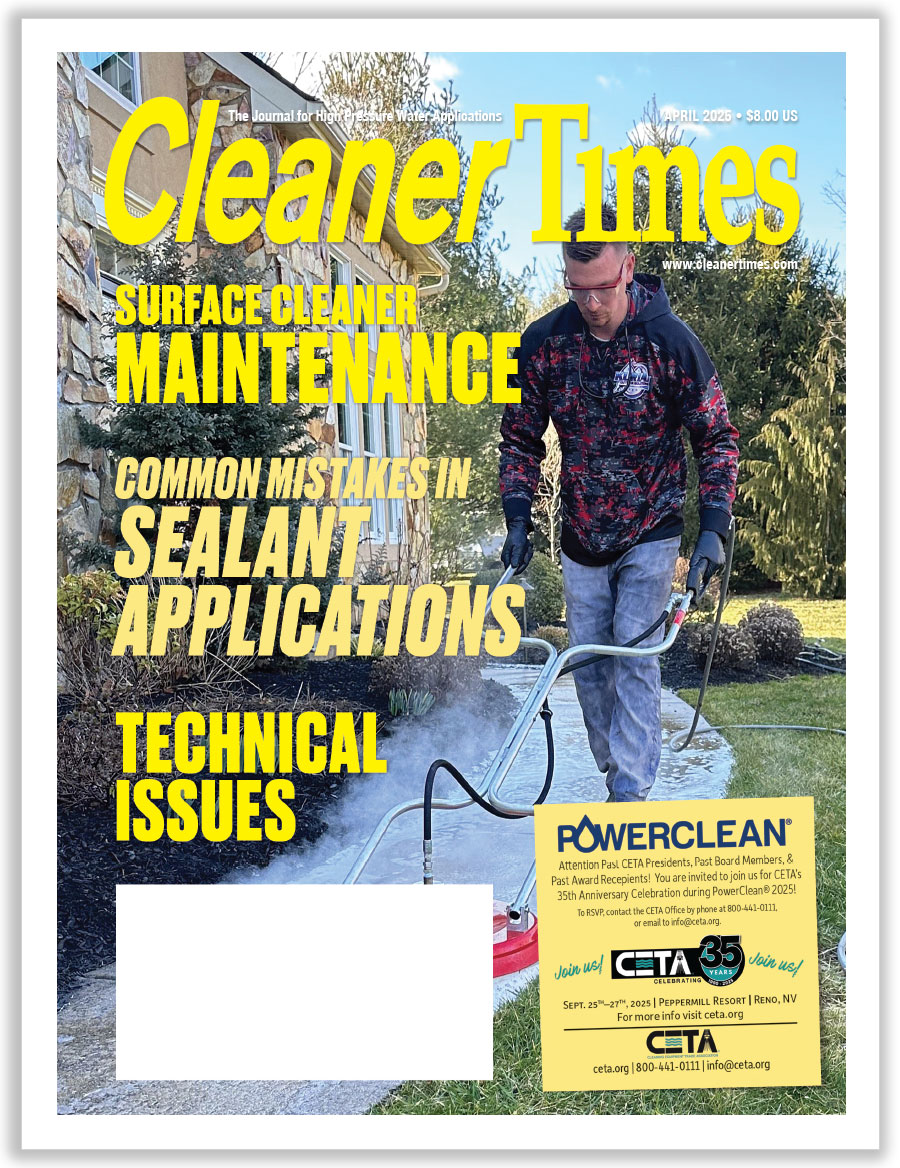
How Employees Are Changing
By Diane M. Calabrese / Published February 2020

Most religions incorporate a version of the reminder to treat pre- and post-enlightenment the same way. Both circumstances require us to carry the water and till the soil. In other words, there’s always work to be done, so pitch in and get it done. The task does not define the person. The actions of the person do.
The premise (just do it) keeps communities and societies strong because people and systems—whether families, buildings, or infrastructure—are not left to fall apart. Is the principle that everyone should find something to do and get busy still as applicable as ever?
Or, are employees changing in their outlook? Perhaps employers are changing, which makes it seem as though employees are different.
Some of what appears to be a change in employees may be more of a change brought about by regulators of workplace practices. And much of what looks like a different perspective among employees may result from changes in the economy.
“Being in California, a very liberal state, I’m finding out everything is getting expensive,” says James D. Gamble, owner of Crystal Cleaning Company LLC in Antioch, CA. High costs might translate into employees who seek to do more to earn more, but it doesn’t.
“I do not see the average worker as wanting more responsibility,” says Gamble. “I see them wanting more money and less responsibility.” Things have changed—at least in the Golden State, says Gamble. He recalls 1991 as a particularly good year. “They were so eager to work,” he says.
For a period, Gamble hired only part-time employees. Then, he began hiring only contractors. The impetus for the transition came from the growing list of regulations.
“It’s very expensive to hire employees,” says Gamble, citing the extensive worker protections in place in his state. Mandated benefits and time off can become extremely prohibitive.
Over time Gamble developed a model that works for him. He says it will not be right for every business owner. “I actually fly in my subcontractors from Kansas City, Florida, and Texas,” explains Gamble. “They’re eager to work. They don’t expect anything to be given to them.”
To illustrate the protection afforded employees in California, Gamble cites the law that allows employees to smoke marijuana on the job. (The District of Columbia is heading in the same direction.)
When a worker who got high tore off the top of a truck, the employee turned the incident around on Gamble. Why did Gamble let him drive when he knew the employee would get high from time to time?
The absence of loyalty from employees precipitated Gamble’s move to the contractor model. He only hires contractors from out of state. To make his model work, Gamble must find and secure big projects. “Now, I look for six-figure jobs,” he explains. And he finds them.
As for finding contractors, Gamble takes a direct approach. “I get online and I talk, and I see what type of contractors they are,” he explains. Before subcontracting to anyone, he goes to meet the person. He also advances mobilization costs for incoming contractors.
Gamble does not have a rosy-eyed view of contemporary employees based on his experience. He explains that too many people lack an understanding of what it is to be a business owner and what the difference is between owning a company and working for the company.
“I think that people think they deserve a piece of the pie,” Gamble explains. “If I work for you, if there’s profit, I should get a percentage. They feel that they are owed.”
With subcontractors arriving from other states, Gamble builds a team that understands how important it is to complete a task. The subcontractors own businesses, they are experienced at their work, and they know how important completing one job to the satisfaction of the customer is (in the larger universe bringing more work).
Similarities and Differences
Lest anyone conclude California is a singular case, let’s get insight from the Peach Tree State.
“I have young people who seem to want praise for everything they do—whether it is earned or not,” says Tracy Handl, COO of North American Pressure Wash Outlet LLC in Gainesville, GA. “If they did it, they will ask if they did a good job.”
Ties to the virtual world cannot be severed, says Handl. “Young employees certainly can’t be far from their phones. I allow phones for media use, like listening to music, but it actually got in the way at one point and corrective measures had to be taken.”
Even so, many employees work well and make it all come together. “There are great entry-level employees who do know it takes work to do a job,” says Handl. “They are not as numerous as the ones who just want to show up and be the next best thing to the boss.”
Handl’s company has been in business seven years. During that interval, there has been a change. “Work experience, critical thinking—new employees do not seem to have as much,” he says. “Work planning is less with new employees.”
What may account for the difference? “Maybe it is a little fear that they will make a mistake,” says Handl of his newer employees. “But our first employees must have been willing to take chances because things were made to happen and move the company along. Now it seems you have to lead them to get things to happen.”
Differences aside, there are similarities too between veteran employees and newer employees. “Both need guidance, nurturing, a secure feeling in their job, and a way to make a living,” says Handl.
As for looking for big changes that coincide with different generations, Handl is skeptical. “I don’t know that there is such a change from one generation to the next as folks may think,” says Handl. “There are always the coddled, the inexperienced, the hard workers, the sluff-offs, and the leaders.”
Along with the similarities, though, Handl sees one difference in a trend that’s concerning. “There is a lean toward the entitled and the softy,” he explains. “New workers don’t seem to know about earning a way up the ladder and often don’t want to do the grunt work to start.”
Observing the trajectory of things, Handl is both understanding of how it happened and the new workers. “I’m not so sure it isn’t because new workers really don’t know where to start,” he says. “They aren’t coming up with experiences that prepare them for work.”
Handl recalls how he gained great experience in what it took to do a job, including stick-to-it commitment. “When I worked on the car with dad, it taught me a lot more than just working on the car,” he says. “And those things are not done as much as they once were.”
The absence of the sort of hands-one, side-by-side, one-on-one experiences that Handl describes may be contributing to lack of preparation. “This is one of the biggest contributing factors to people not really having the skills in the workplace,” says Handl. “Life skills are must-haves for employees,” says Handl. “They allow one to have common sense, critical thinking, and planning abilities.”
Why It Matters
Business and other popular media cover the topic of changes in employees and point to recent entrants as possessing high expectations for greater autonomy and responsibility, as well as a path to rapid advancement, while veteran employees generally do not. With employee turnover being a costly dimension of business, owners want to attract and retain reliable workers.
An owner, then, must both tamp down unrealistic expectations of new employees and simultaneously encourage them to see the value in doing a good job and learning to do more without a reward for every positive accomplishment. It’s a difficult balance for owners to achieve.
It’s made especially difficult because recommendations for effective retention of employees—and all the corresponding literature directed at employees—often increase employees’ expectations. For example, the Careeronestop Business Center sponsored by the U.S. Department of Labor offers several recommendations for effective retention.
Among the Careeronestop advice to employers: flexible work schedules and benefits tailored to individual needs. For contractors, distributors, and manufacturers, both approaches would be expensive and potentially disruptive. Advice that’s good and much easier to implement is putting a focus on clarity.
An employer should make certain employees understand the nature of the business and what makes it successful. Tell the employees about the way their performance contributes to the vigor of the company.
For more recommendations see the “Train & Retain” document via www.careeronestop.org/businesscenter/trainandretain/manageandretainemployees/retention-strategies.aspx.
As Handl hypothesizes, many conclusions employers reach about the way employees are changing may result from an absence of information about employee expectations in the past. Employees have always sought to find purpose in their work. They still do.
Some find purpose alone. But an employer can help employees fully engage by explaining how everything done right matters to society, including carrying the water, tilling the soil, and tapping the cleaning power of our universal solvent, water.





